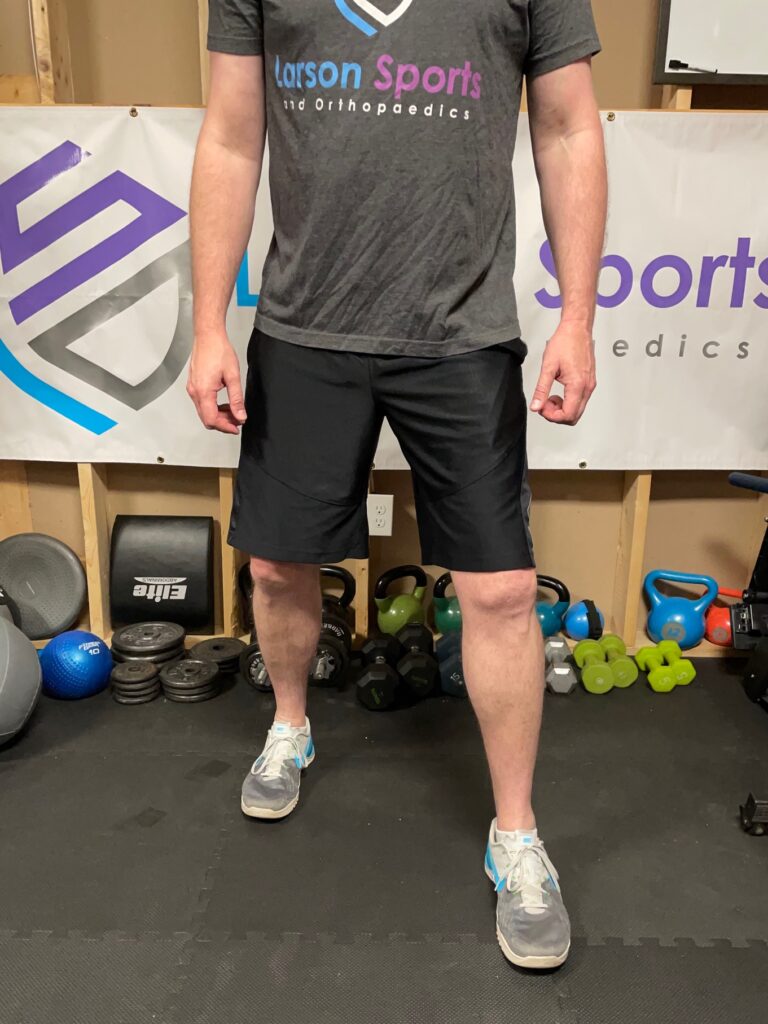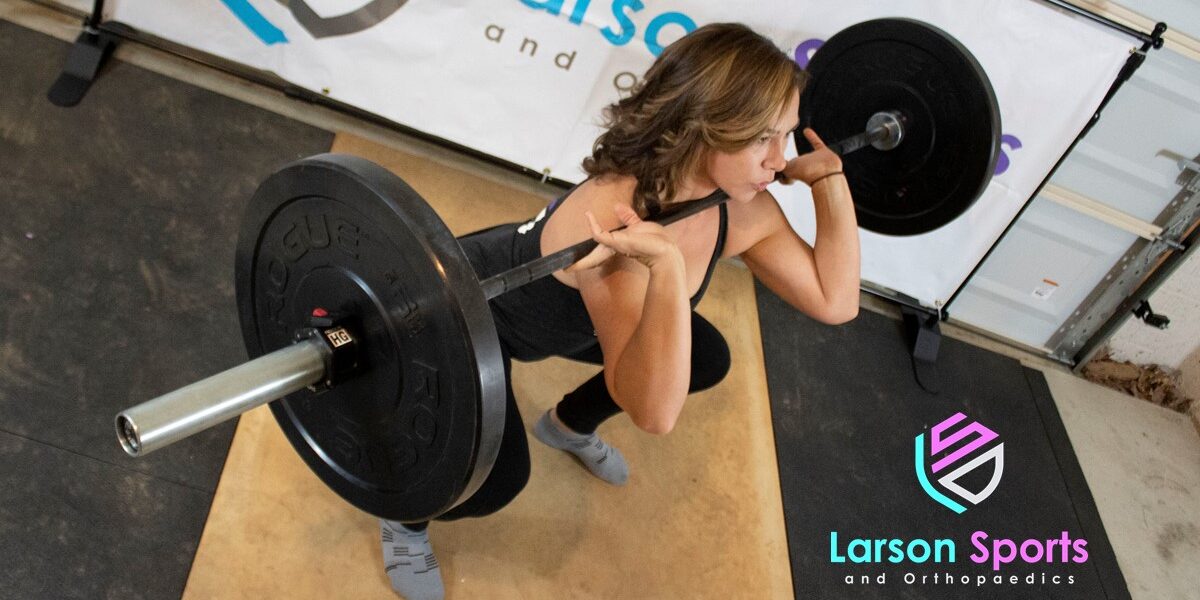If there is one thing that is constant in the world of weightlifting, it is debate about squat technique. And one of the most commonly argued aspects is about foot position. I’ve seen plenty of coaches and trainers who absolutely insist that there is only one proper foot placement for the squat: about shoulder-width apart and with the toes pointing slightly out. It’s because they believe that minor changes to foot position make a big difference in which muscles are activated during the squat. But is that true?
Does it really matter which way you point your toes, or where you put your feet, when squatting?
Highlights
- Foot rotation, or angle, doesn’t really change the mechanics of your squat
- But different foot placement, or position, can change your squat mechanics and muscle activation significantly
- to find out the difference between foot rotation and foot position keep reading!
Does foot position change your squat?
To quote one of my favorite shows “Long answer: Yes with an IF. Short answer: No with a BUT.” Because we have to talk about two separate things: Foot Rotation and Foot Position. Because Foot Rotation is something that a lot of coaches and trainers really lose their minds over but doesn’t really matter. However, your foot position (or placement) during a squat does matter – a LOT.
What’s the difference between foot position and foot rotation?
Let’s keep this simple. Foot Rotation refers to the direction your feet point. Do your toes point straight ahead or in towards each other? Maybe they point out to the side a little… or maybe a lot? Basically, we are talking about keeping the heels in the same position and changing which direction the toes are pointing. That’s foot rotation.
Foot Position, in contrast, refers to the distance between your feet in both directions. Are they shoulder width? Maybe you squat with your feet wider than your shoulders, or keep them close together. Or you can place one foot slightly in front or behind the other. That’s foot position.
Foot rotation doesn’t really affect the squat

Some people may walk with their toes pointing toward each other more. This is sometimes called being “pigeon-toed.” In the world of orthopedic research and movement analysis, this is referred to as “in-toeing.” If that is how you normally walk, you’ll find it more natural to squat with your toes pointing closer to straight forward.
To put it plainly, foot rotation does not really affect your squat at all, as long as it’s a comfortable position for you. Everyone has slightly different bone structure. You’ll notice that some people walk “duck-footed” with the toes out to the side more. In orthopedic surgery, we call this out-toeing. Others walk “pigeon-toed” with the toes pointing toward each other. We call this in-toeing.

Other people may walk with their toes pointing out to the side more. This is sometimes referred to as being “duck-footed” but the scientific term is “out-toeing.” If you usually walk with the toes pointing to the side, that will also probably be the most comfortable position during a squat also. And that is okay!
Foot progression angle
The direction your toes point while walking is called your foot progression angle. And it affects the foot rotation you prefer when squatting. And it’s a great predictor of the foot angle most comfortable for you while squatting.
There are many factors that affect which direction your toes point while walking. This includes your age, sex, height, body weight, foot arch, if your legs are long or short for your height, how much twist or rotation are grown into your tibia and femur, and the angle of your hips and knees. And all of these factors make it more comfortable for you to walk or squat with a particular rotation to your feet.
What is a normal foot progression angle?
Everyone’s foot progression angle (FPA) is a little different. And the funny thing is that it actually changes throughout our growth and development. Toddlers tend to walk with significant in-toeing. It’s why they all look pigeon-toed. But the foot progression angle slowly changes as we grow. By the time we are pre-teens we tend to walk with much more out-toeing. And then it comes back around to a fairly central position as we finish growing. But it may change in later life due to problems like fallen arches, injuries, or arthritis.
When we talk about FPA, negative numbers mean the toes point inward toward the other side, zero is straight ahead, and positive values mean the toes point out to the side. The average foot progression in adult men is about 4 degrees. For women, it’s straighter; about 1.5 degrees. But the range of normal for an adult can be anywhere from -10 to +20. And that means it can be most comfortable for people to set up their squat anywhere within this same spectrum.
But does your foot rotation matter when squatting?
Research is always fickle; you can always find one or two studies to support just about any position. This is why we take the cumulative weight of data from the best studies. And in this case, it says that there really isn’t much difference to muscle activation or joint forces due to foot rotation, at least not statistically significant differences.
So if you are a weight lifting coach or personal trainer, stop worrying about which way your clients point their toes. Let them find a comfortable position, and focus on the rest of their form. In fact, forcing them to point their toes into a position that’s not natural for them will make it harder to perform the rest of the squat well.
If their knees buckle together during the squat, it’s not because of how they point their feet during their set up. It’s because they are letting the knee collapse inward. Focus on gluteal activation to push the knees outward and maintain the arch of their foot. That will fix the real problem, reduce the stress on their knees, and help prevent injury.

If you are trying to activate different muscles during your squat, don’t worry so much about which direction your toes are pointing. Instead, change the position of your feet relative to each other and your body. Staggered stances and a narrow stance can increase quadriceps activation, while a wide stance can increase gluteal muscle activation.
But what about squat foot placement?
Ah yes, let’s not forget about foot position (aka placement.) How is foot position different from foot rotation? In this case, we are talking about the placement of the feet relative to each other and the body. Are the feet at shoulder width? Wider? Narrower? Or maybe they are staggered, one in front of the other like they would be during a lunge or split squat.
In this case, you do alter the mechanics of the squat quite a bit. When you move your feet further away from each other (wide stance) you increase gluteal activation. A wider stance also increases the torque on your knees significantly. But when you move your feet close together (narrow stance) you increase the activation of the quadriceps and lower the activation of your glutes.
Staggered stance also affects the squat
Another thing you can do to increase quad activation during a squat is to stagger your stance, putting one foot forward and one foot back. This is also known as a split squat. Muscle activation during a split squat is similar to that during a lunge. There tends to be less gluteal muscle activation and more activation of the quads.
The best way to activate glutes during a squat
And a final way to change muscle activation during your squat has nothing to do with your stance at all. At the bottom of a squat, the quads have very poor leverage. So Your glutes HAVE to do all the work. And the deeper you go, the more the glutes are engaged. So the best way to work your booty during a squat is getting below parallel and getting as deep as you comfortably can.
(PS – don’t push your squat depth if you’ve had a hip replacement unless your doctor says its okay. You can read my other articles for more information: Exercise and Weight Training After Joint Replacement and Exercises to Avoid After a Hip Replacement )
Summary
Basically when it comes to foot rotation, do whatever is comfortable. Picking a natural position for your foot rotation that mimics your normal foot progression angle while walking will set you up for success. This angle will vary from person-to-person due to different proportions of our bodies. These differences mean that everyone’s optimum squat form will be slightly different.
If you want to target your glutes, you can do a wide-stance or sumo squat. Or you can get down deep and squat below parallel, which will force your glutes to work harder.
If you want to target your quads more, you want to keep your feet close together. Either that or do split squats with one foot forward and one foot back.
References
Effects of Foot Position During Squatting on the Quadriceps Femoris: An Electromyographic Study
Foot progression angle after distal tibial physeal fractures
Lower-extremity rotational problems in children. Normal values to guide management.

